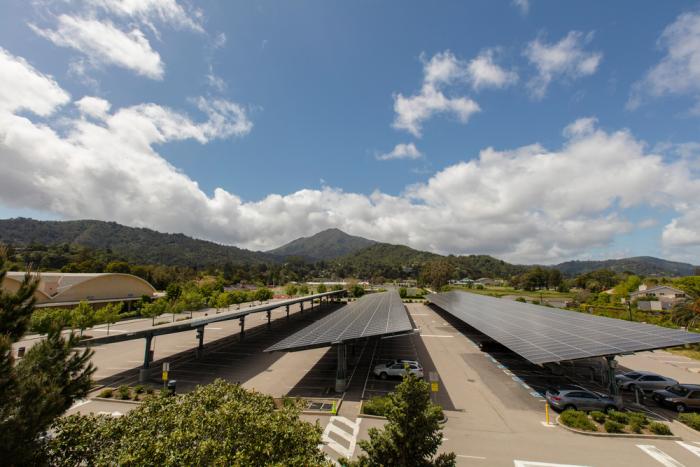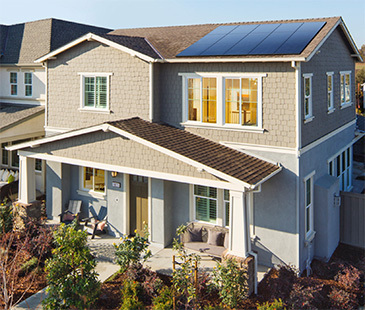
Editor’s Note: In 2020, SunPower announced the completion of the strategic spin-off of its manufacturing division into a separate business named Maxeon Solar Technologies, Ltd. As a result, SunPower has expanded its offerings to drive future growth. The SunPower Equinox® system now offers multiple panel options, including front- and back-contact panels, all of which are responsibly and rigorously quality tested to provide the best energy solution for your home.
This Election Day, California voters will decide whether to pass Proposition 51, a public education facilities bond initiative that would raise $9 billion for K-12 and community college school construction and improvements.
It’s been 10 years since a statewide bond was passed, and schools report having a $2 billion backlog of projects. The funds could be used for much-needed modernization work that would make the state’s aging school buildings more energy efficient.
So, if you’ve ever thought your school should switch to clean solar energy to save money and help the environment, Prop. 51 offers a way to help increase the number of solar schools in California.
If the school bond ballot measure passes, it would raise:
$3 billion for the construction of new school facilities;
$1 billion for charter schools and vocational education facilities;
$3 billion for the modernization of public school facilities; and
$2 billion for acquiring, constructing, renovating and equipping community college facilities.
Schools that modernize their facilities can lower their utility costs by making improvements such as installing solar panels, adding more energy efficient lighting and HVAC systems; and better managing their power use with energy intelligence software.
According to a report on solar for schools by The Solar Foundation, the large, flat rooftops typically found on public and private K-12 school buildings throughout the United States make many of these properties excellent candidates for solar systems. And school parking lots can be put to productive use with solar carports, which provide the added benefit of shaded parking.
The potential savings are significant: It’s estimated that if 72,000 schools in the nation switched to solar, they’d save $2.8 billion over 30 years, according to The Solar Foundation.
Solar school success story
The Mt. Diablo Unified School District’s solar project is one of many SunPower solar school success stories.
Mt. Diablo expects to save an estimated $220 million over 30 years by installing solar across 51 school campuses.
“Not only does our solar project model good environmental stewardship for our students, it will also help generate millions of dollars in funding and cost-savings which are critical for our educational programs in these difficult financial times,” said Steven Lawrence, former superintendent of the Mt. Diablo Unified School District.
Schools that go solar with SunPower get access to our Horizons education program that includes a full suite of curriculum to teach youths and teachers in the classroom and in the field about renewable energy and the science, technology, engineering and math skills required to pursue a career in a field such as solar energy.

How do schools finance solar?
School districts generally hold a local school bond election to fund improvement projects. They then can also apply for federal zero interest matching funding. This keeps a school district’s general fund cash free for educational programs. Learn more in this video of a panel we presented on using low-interest bonds to fund solar projects.
Clean Renewable Energy Bonds (CREBs) are another source of low-cost financing that give bond holders federal tax credits in lieu of a portion of traditional bond interest, resulting in a lower interest rate for the borrower. This allows a school district to raise more money to complete more projects.
Schools can also take advantage of a power purchase agreement, a financial agreement where a developer arranges for the design, permitting, financing and installation of a solar energy system on a customer’s property at little to no cost. The developer sells the power generated to the host customer at a fixed rate over a period of time that is typically lower than the local utility’s retail rate.
If voters approve Proposition 51, school districts will have a new opportunity to fund long overdue improvement projects and help increase the number of solar schools in California.
Are you voting for Proposition 51? Why or why not? Tell us in the comments below.

